지지씨
Evolution of Humanity, the Great March Forward - 1. In Africa
Our earliest ancestors began to evolve in Africa about six or seven million years ago. Similar to the ancestors of gorillas, they spent most of their time in the trees, but they were also able to walk on two legs on the ground quite easily. Walking upright on two legs is often considered by scientists to be the most fundamental defining trait of human beings. The first humans started their great march across the vast land of Africa. Collecting such evidence of evolution is an extremely difficult and time-consuming process. Archeologists, anthropologists, and paleontologists are continuously striving to solve some very complicated and difficult jigsaw puzzles concerning the human evolutionary process, largely relying on ancient fossils, relics, and DNA analysis results. As a result, even professionals often propose conflicting opinions about the time and location of settlement of a certain species. However, there is no doubt that human beings have made a great march in terms of human evolution. The past brought us into existence and the future will lead us on an evolutionary journey. The moment you enter the Jeongok Prehistory Museum, you will join a several-million-year journey through the history of human evolution, walking alongside our human ancestors.
In Africa…
The First Humans: The Savannah of East Africa Approximately ten million years ago, Africa experienced frequent and powerful volcanic eruptions and, as a consequence, massive cracks started to form on the Earth’s crust and the continent started to break apart. The Great Rift Valley that divides the continent into eastern and western Africa is also believed to have formed during this crustal movement, or so-called ‘diastrophism’. This diastrophism was also accompanied by continuous climate change – changing wind conditions, repeated cycles of extremely cold and hot weather, and a decrease in rainfall. Ultimately, much of the African continent gradually transformed from a tropical rainforest region filled with trees and forests into vast savannahs, in other words, dry grassland with a scattering of trees.

The ancestors of Australopithecus dwelled in tropical rainforest trees from which they obtained abundant food. However, changes in their living environment, namely, from forests into grasslands due to climate change led to food shortages, leaving them no choice but to adapt to the new savanna environments. Accordingly, they climbed down from the trees and began to stand upright on two legs, spending more time on the ground. These earliest humans of the savannahs picked plants and berries, ate insects or scavenged the leftovers of large predators, although they were so vulnerable that they often became the prey of carnivores, such as lions, themselves. As a result, they opted to adapt to a new environment out of the forests, and their ability to walk on two legs left their hands free to carry food and take care of their offspring, which eventually enabled them to survive in the harsh environment of the savannah.
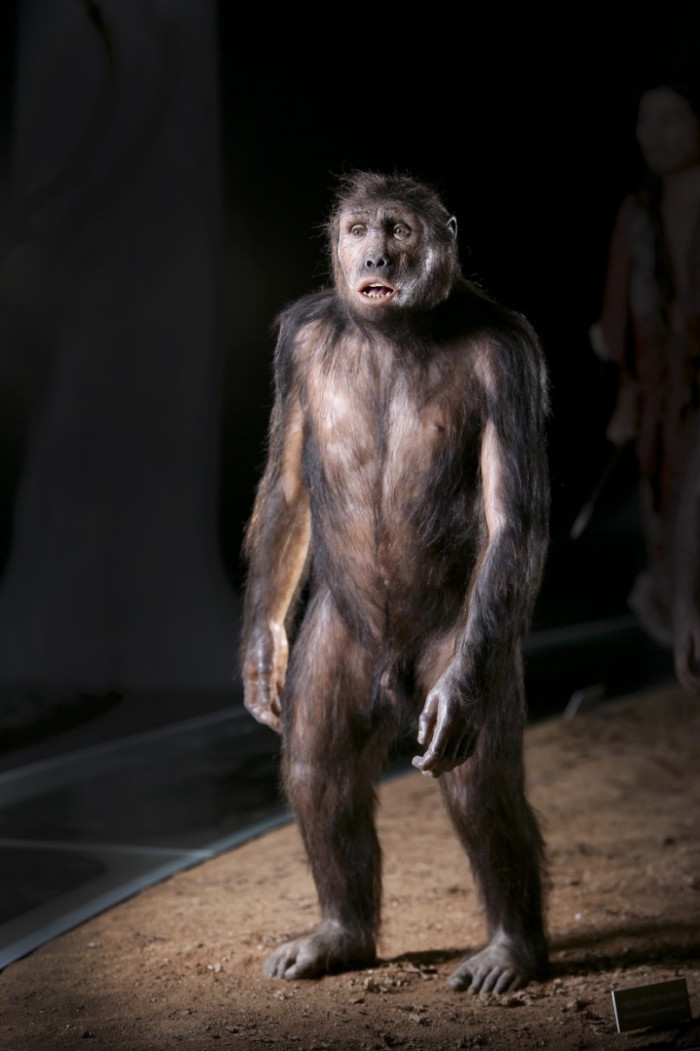
Place of Settlement: Republic of Chad / Period: 6-7 million years ago / Discovery Site: Toros-Menalla / Species: Sahelanthropus tchadensis / Nick-name: Toumai (‘hope of life’ in the local language) / Cranial Capacity: 320-380cc / Major Characteristics: Small canines and an anterior foramen magnum, (which is the hole through which the spinal cord exits the skull, providing anatomical evidence that Toumai was bipedal).
Found in the Djurab Desert in northern Chad, Central Africa, Toumai dates back some 6 or 7 million years, making it one of the oldest hominid fossils ever found. Fossils of the near-complete skull, fragments of jaw, and some teeth were discovered by the research team of Michel Brunet of the University of Poitiers in 2001. Toumai, which means ‘hope of life’ in the local language of Chad, has the binomial name Sahelanthropus tchadensis. Toumai’s cranial features, including a braincase that is only a little bit smaller than that of the chimpanzee, a flatter (inclined) face, and heavy brow ridge, are similar to those of anthropoids. Its major characteristics are its small canines and the anterior foramen magnum, which is the hole through which the spinal cord exits the skull (providing anatomical evidence that Toumai was bipedal).
The Toumai fossils were discovered in the desert of Chad, Central Africa, which is 2,500 kilometers west of the Rift Valley, from which the previous earliest hominid fossils had been found, indicating that the settlements of the early archeoanthropine were more spread out than previously thought. It is assumed that Toumai ate leaves, fruits, seeds, root vegetables, and small insects. Although no postcranial remains (i.e. bones below the skull) have been discovered, it is estimated that they were similar to the chimpanzee. According to scholars, Toumai existed around 6 to 8 million years ago after the split of the human line from that of gorillas and chimpanzees, and is highly likely to be our oldest known human ancestor. Although many questions remain to be answered, Toumai is regarded as evidence of the progress of human revolution.

Place of Settlement: Ethiopia / Period: About 2.8 million years ago / Discovery Site: Midstream of the Awash River at Hadar, Ethiopia / Species: Australopithecus afarensis / Nick-name: Lucy, after the Beatle’s song "Lucy in the Sky with Diamonds", which was played at the party held to celebrate her discovery. / Cranial Capacity: About 450cc / Major Characteristics: The skeleton had been mostly recovered. The diastema between its carnivore tooth and the next tooth remains.
Lucy, a member of the Australopithecus afarensis species, is the most common and well-known of all hominid fossils ever found. The American anthropologist Donald Johanson discovered several hundred pieces of bone representing about 46% of the entire skeleton, including the skull, at Hadar in the Afar depression in Ethiopia, Africa in 1974.
Lucy was a female with a height of about 107cm and a weight of 28kg. She is estimated to have lived about 2.8 million years ago, wandering around the woods of the savannah in a bipedal upright walk rather than a quadrupedal posture after descending from the trees in East Africa. Lucy’s wide but short pelvic bones and thigh bones, which were turned inward, show that these hominids walked erect like modern humans. However, its conical rib cage, short legs, and small brain, as well as the mandibular structure, are more similar to those of anthropoids than those of humans. In addition, judging from her long fingers and toes, which seem suited to climbing trees, it is assumed that she spent most of her time in the trees like other anthropoids, rather than walking bipedally in an upright posture. Lucy was named after the Beatle’s song Lucy in the Sky with Diamonds, which was played at the party held to celebrate her discovery. Lucy is also known as "Dinenesh", which means "you are beautiful" in the local language in Ethiopia. Lucy is considered a very important fossil, providing the most direct evidence that our human ancestors were already walking upright millions of years ago, in line with the great progress of human evolution.
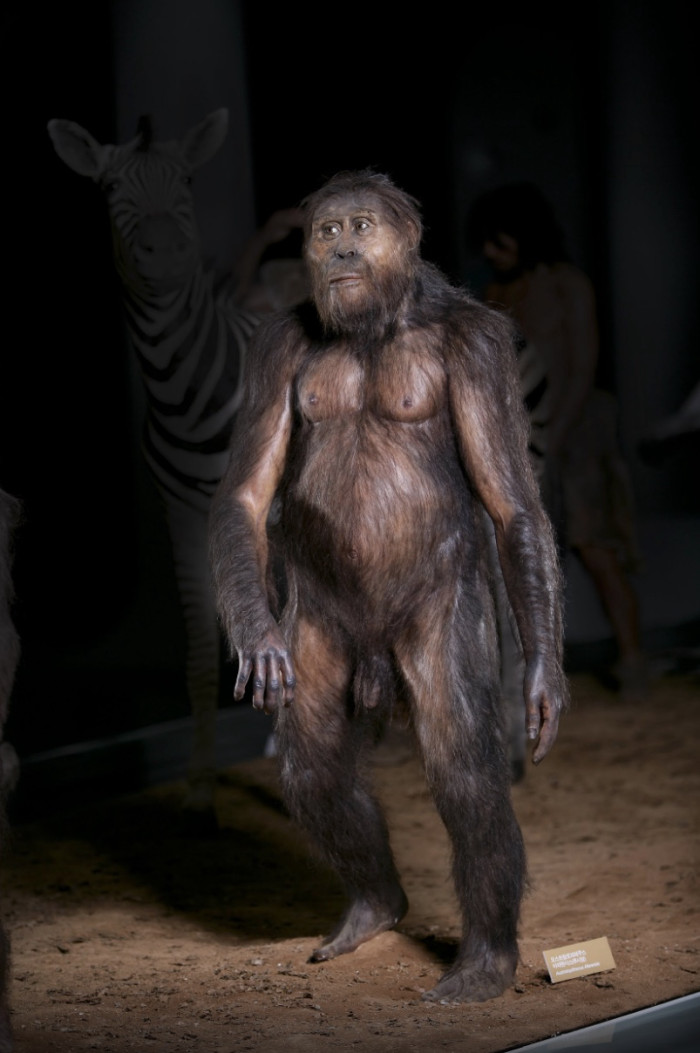 Place of Settlement: Ethiopia / Period: About 3 million years ago / Discovery Site: In midstream of the Awash River at Hadar in Ethiopia / Species: Australopithecus afarensis / Nick-name: Lucien (meaning “Lucy’s boyfriend”) / Cranial Capacity: About 550cc / Major Characteristics: Lucien is the fossil hominid suggesting that there was the difference of the body size between the sexes in the evolutionary process of early hominids.
Place of Settlement: Ethiopia / Period: About 3 million years ago / Discovery Site: In midstream of the Awash River at Hadar in Ethiopia / Species: Australopithecus afarensis / Nick-name: Lucien (meaning “Lucy’s boyfriend”) / Cranial Capacity: About 550cc / Major Characteristics: Lucien is the fossil hominid suggesting that there was the difference of the body size between the sexes in the evolutionary process of early hominids.
In 1992, Joel Rock discovered a fossilized skull of Australopithecus afarensis, the same species as Lucy, at Hadar in Ethiopia, where Lucy was also found. 70% of the skull fossil, consisting of about sixty fragments of skull, was recovered through an elaborate connective work, which also showed that its cranial capacity was approximately 500cc.
This hominin species is estimated to have lived about 3 million years ago. As the size of the skull is much larger than that of Lucy’s, it is thought that this skull of the hominin species belonged to a male Australopithecus afarensis. The difference in the size of the skulls provided the basis for the assertion that the bodies of male and female Australopithecus afarensis were also of different sizes. The nick-name of this specimen, ‘Lucien’, was derived from Lucy by adding the -en suffix, meaning ‘male’ in French. Some scholars say that Lucien constitutes evidence that the body sizes of males and females differed during the evolutionary process of the archeoanthropine. However, the debate still continues over the difference in body sizes, as we cannot be certain whether these differences can be put down to individual differences or whether there was an actual difference between the sexes.

Paranthropus boisei was found at Olduvai Gorge, Tanzania by the anthropologist Mary Leakey, wife of the famous anthropologist Louis Leakey, in 1959. In the period following its discovery, the fossil was called Zinjanthropus boisei’, but it was also called Australopithecus boisei’. However, as anatomical differences between Australopithecus and Paranthropus were recently identified, the species was renamed Paranthropus boisei. Due to its robust, well-developed jaw muscles, it is believed that Paranthropus boisei was able to eat solid foods, and was thus nicknamed ‘Nutcracker Man’. Paranthropus boisei is believed to have lived between 2.5 and 1.2 million years ago throughout Eastern Africa, and is estimated to have weighed about 45kg, stood about 1m tall, and had a brain with a volume of about 530cc.
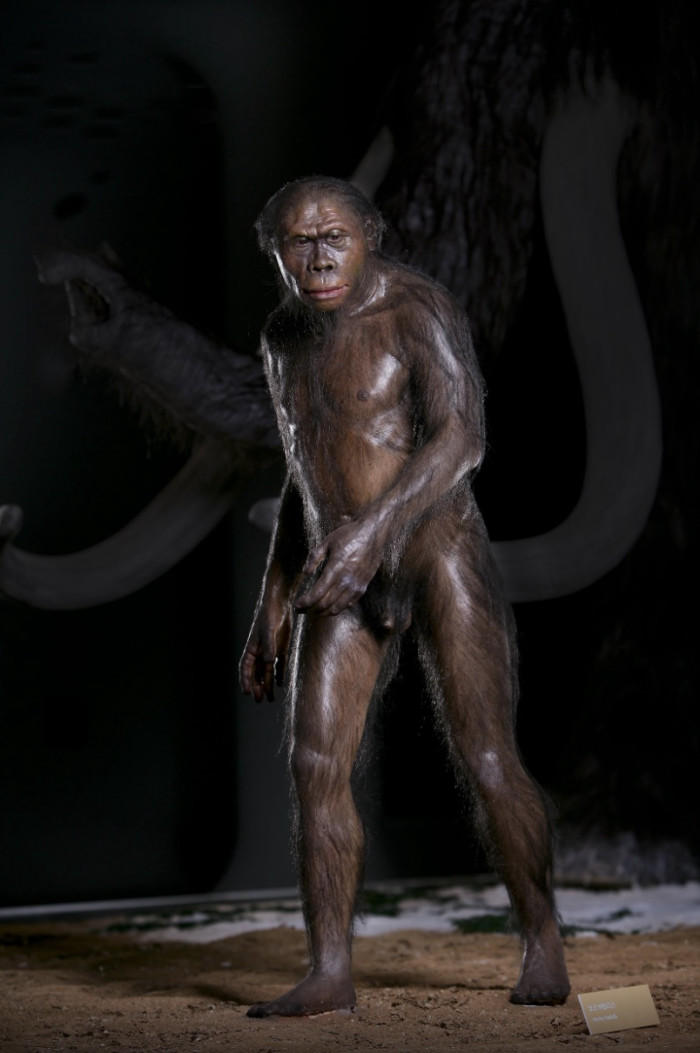
Place of Settlement: Eastern and Southern Africa / Period: About 1.8 million years ago / Discovery Site: Olduvai Gorge, Tanzania / Species: Homo habilis / Nick-name: Handy Man, Able Man / Cranial Capacity: Approx. 600-750cc / Major Characteristics: Prominent forehead, smaller molars, first species to use stone tools.
Homo habilis is a hominid fossil that belonged to the genus Homo about 2.5 million years ago when human evolution entered a new phase: Homo habilis had a prominent forehead and a larger braincase compared to earlier hominin species, and used stone tools. The first fossils were found by Louis and Mary Leakey in 1959 at Olduvai Gorge in the Serengeti National Park, Tanzania. Compared with previous species including Australopithecus, H. habilis had more human characteristics such as a larger brain volume and a smaller face and molars. However, its long arms and prognathic face are still similar to those of anthropoids.
According to the fossil data found, H. habilis was 130-150cm tall on average, and has a brain volume of around 600-750cc. Homo habilis means ‘Handy man’ or ‘Able man’ in Latin, hence the nickname “Handy Man.” Judging from the fossilized bones of arms and legs, H. habilis was bipedal and used tools sure-handedly. H. habilis is commonly known as the first hominid to make and use stone tools. As H. habilis was able to use stone tools to hunt animals and to remove meat from bones in order to eat meat and marrow, its consumption of animal foods greatly increased. Its brain capacity was also astonishingly developed at over 650cc. H. habilis is believed to have existed until about 1.5 million years ago. Although there are still various opinions about its relation to other later species of the Homo genus on the evolutionary ladder, H. habilis is thought to have appeared in the intermediate period between Australopithecus and Homo erectus.
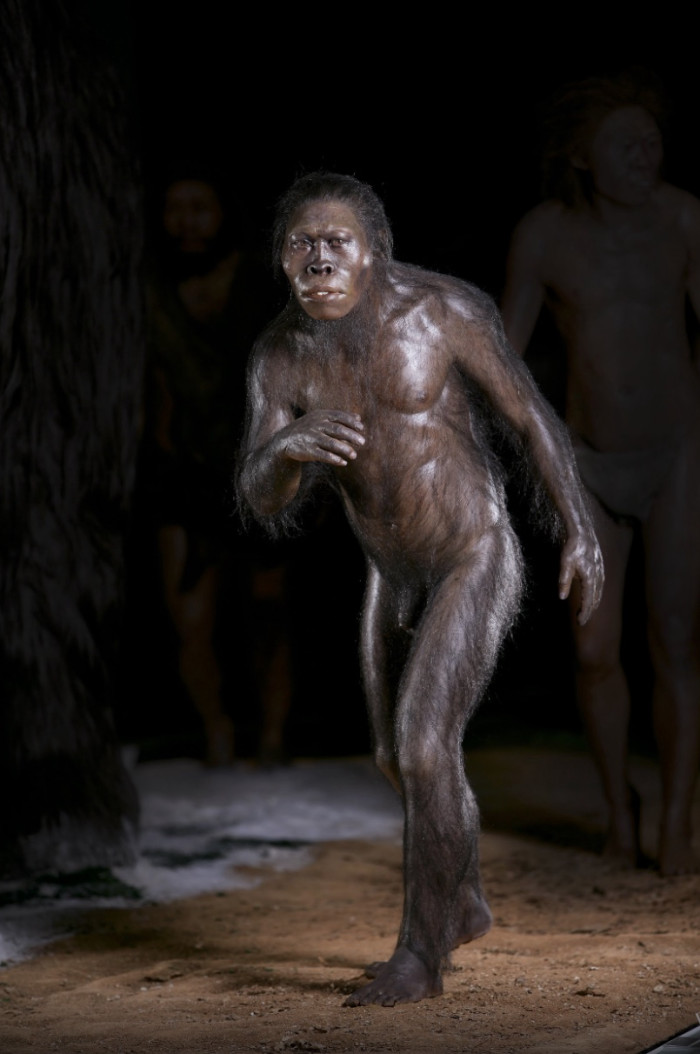
In 1986, Russian scientist V.P. Alexeev named the species Homo rudolfensis after researching an earlier discovery of KNM-ER 1470 fossils (in 1972) near the shores of Lake Rudolf (now known as Lake Turkana) and identified different characteristics to Homo habilis from KNM-ER 1470. Although Homo rudolfensis had a similar appearance to Homo habilis, it had a larger braincase, and differently-shaped teeth and jaws. However, some scholars think that such anatomical differences are simply due to differences between the sexes rather than to the existence of two separate species. Today, most scholars who recognize Homo rudolfensis believe that four species - Homo rudolfensis, Homo habilis, Homo erectus, and Paranthropus boisei - lived together in the Turkana Basin, northern Kenya, sometime between 2.0 and 1.5 million years ago. H. rudolfensis is also believed to have used tools like other species of the Homo genus. There are still many questions to be answered regarding the Homo genus, such as: Which of the species of Homo living around Lake Turkana in Eastern Africa used the stone tools first? And which species is directly related to modern humans?
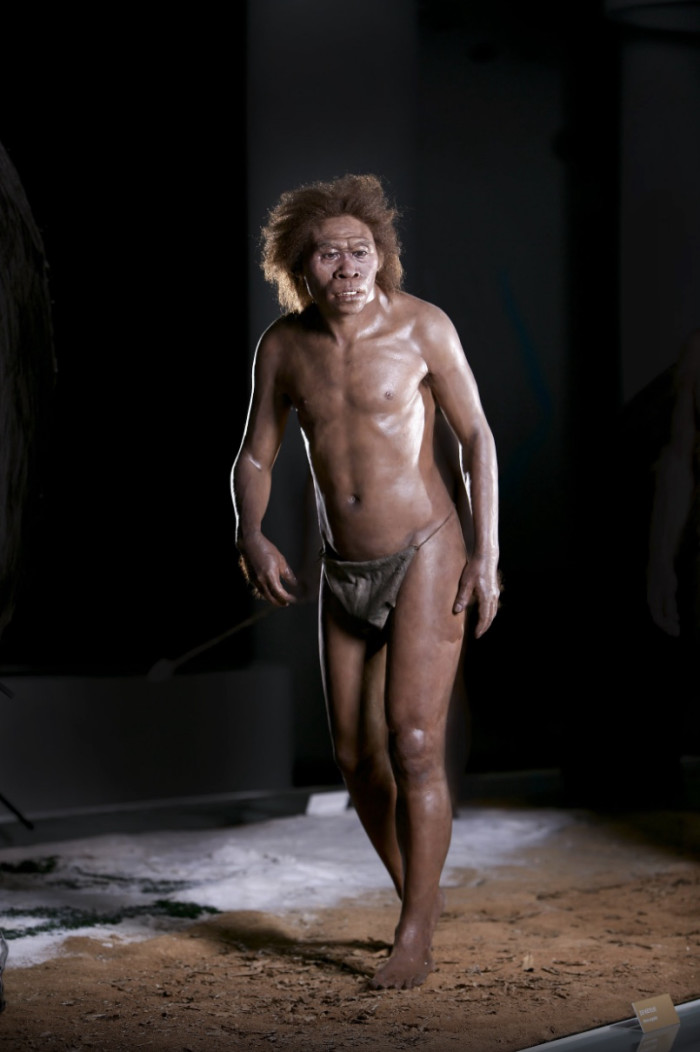
A complete skull fossil of Homo ergaster was discovered at Koobi Fora in the eastern area of Lake Turkana, Kenya in 1975. The skull, with a cranial capacity of about 880cc, was similar to the skull fossil found at Zhoukoudian near Beijing, China, and exhibited the characteristic features of Homo erectus discovered in Asia. However, H. ergaster is distinguished from H. erectus by its thinner skull-bones and lack of an obvious supraorbital foramen. Nariokotome Boy (KNM-WT 15000) is the most complete skeleton of H. ergaster among the hominin fossils found to date. The fossil of Nariokotome Boy indicates that H. ergaster, as an early human who was tall with long legs and short arms, basically had a body of similar proportions to those of modern humans. In particular, his long legs and thin ribs helped him to live in the hot, dry climate of East Africa. Judging from his physical structure, which allowed him to walk long distances in the open terrain of the savannah beneath the blazing sunshine, it is assumed that H. ergaster was the first hominid to have migrated out of Africa.
<ggc의 모든 콘텐츠는 저작권법의 보호를 받습니다.>
- 글쓴이
- 지지씨
- 자기소개